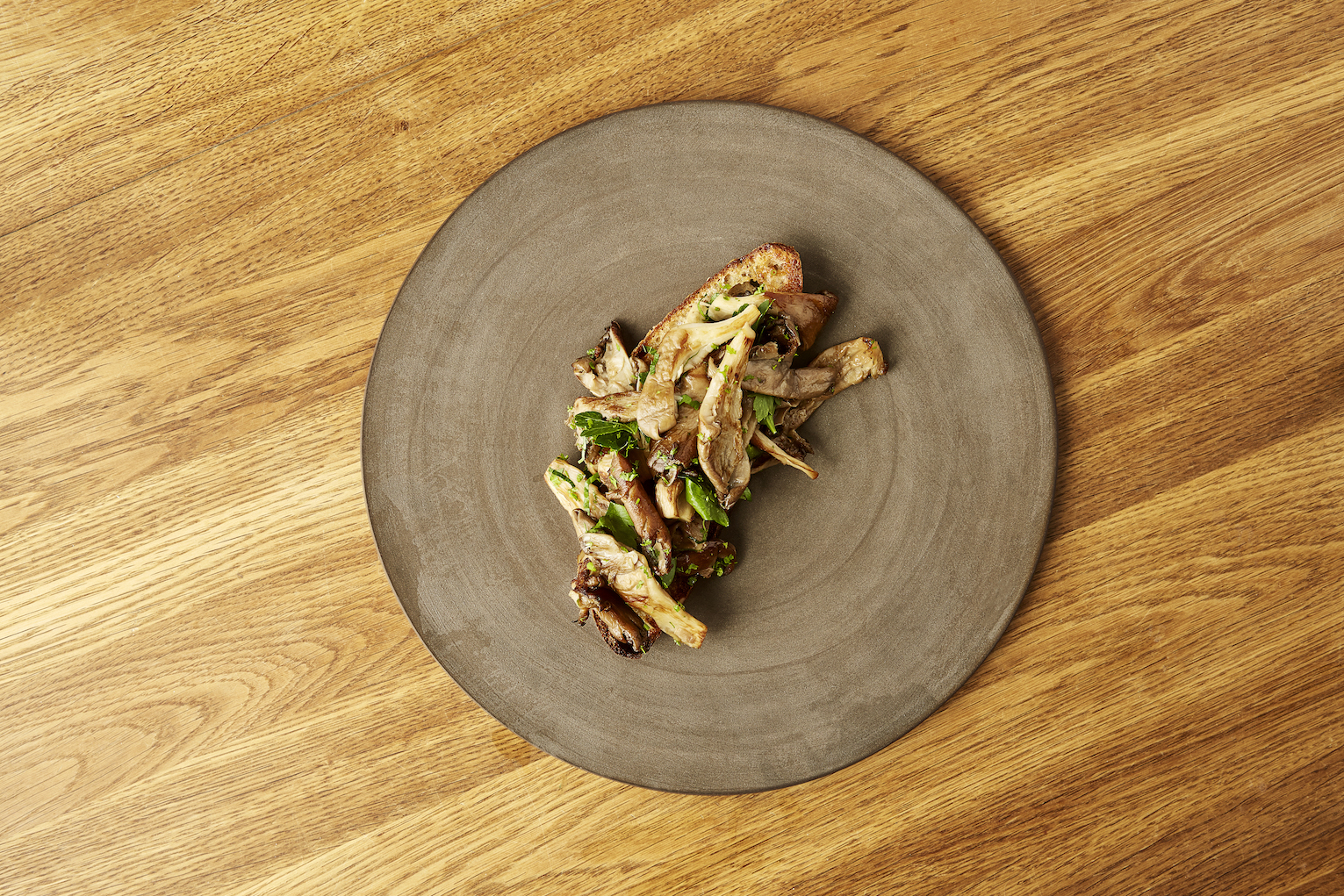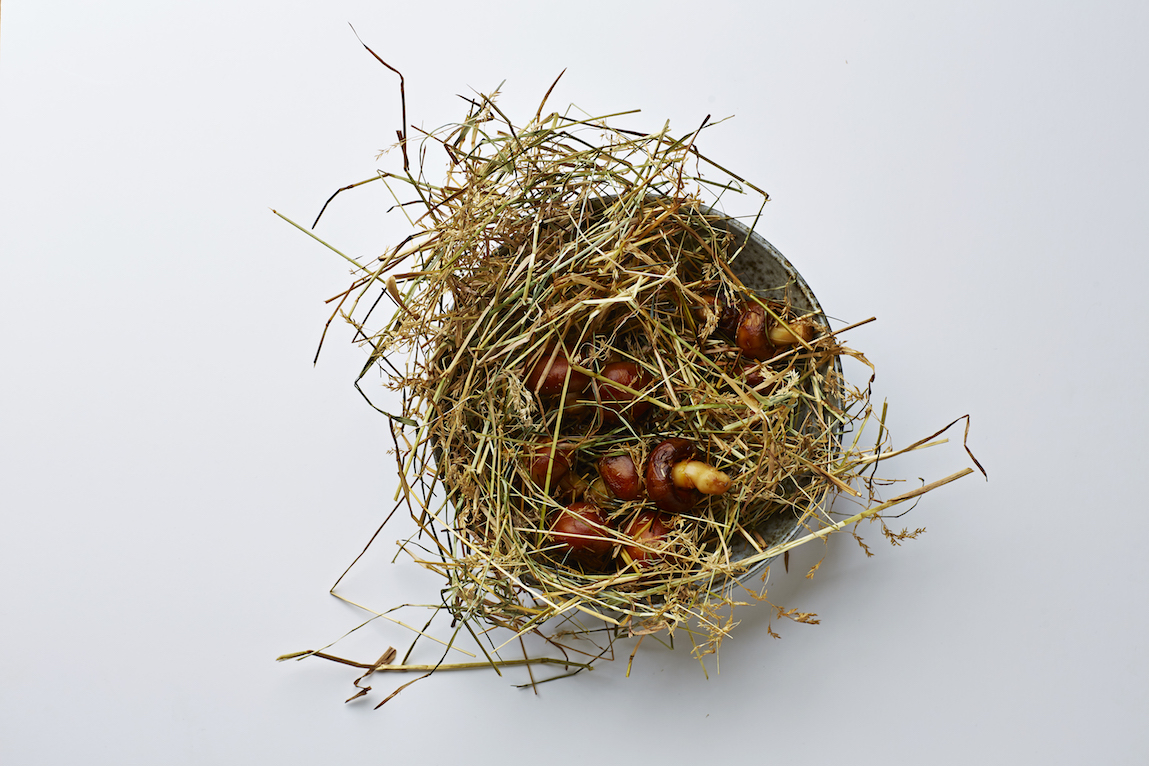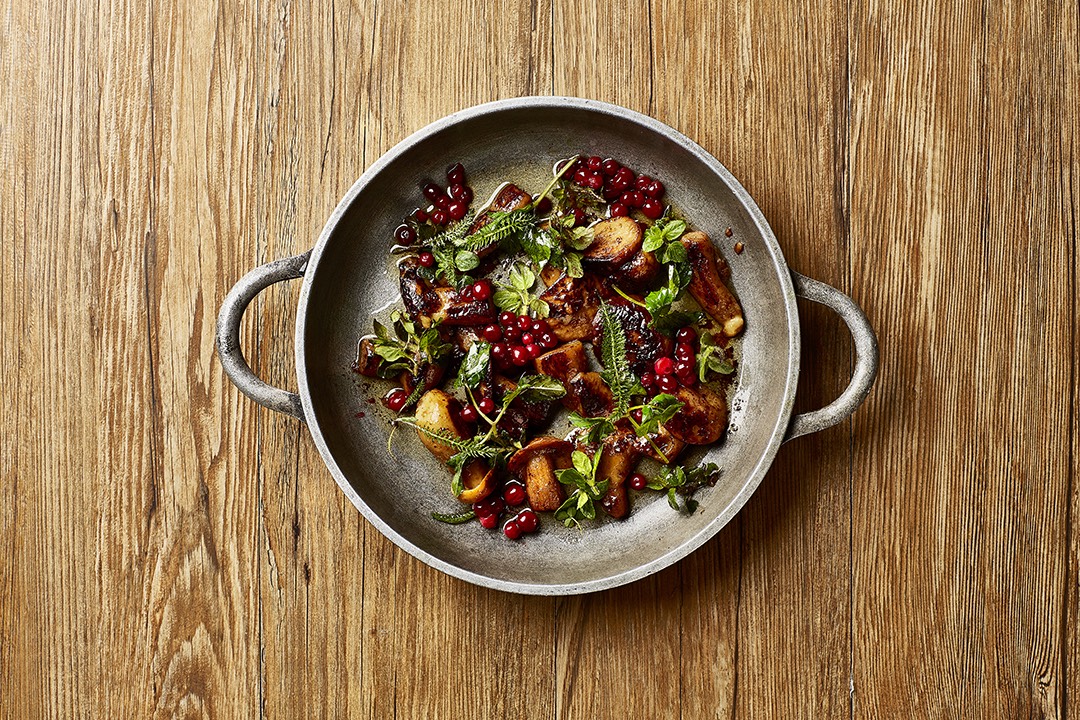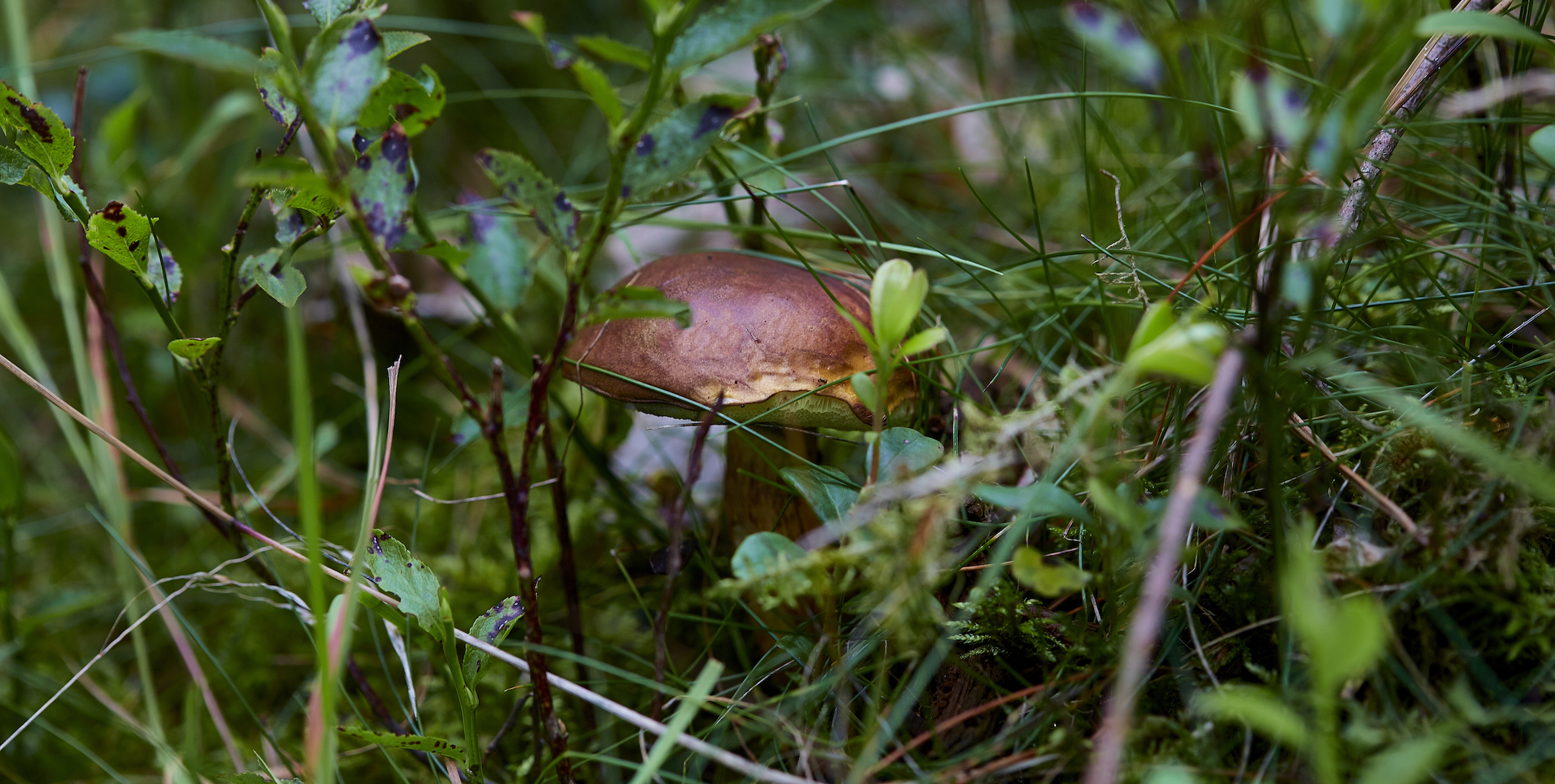
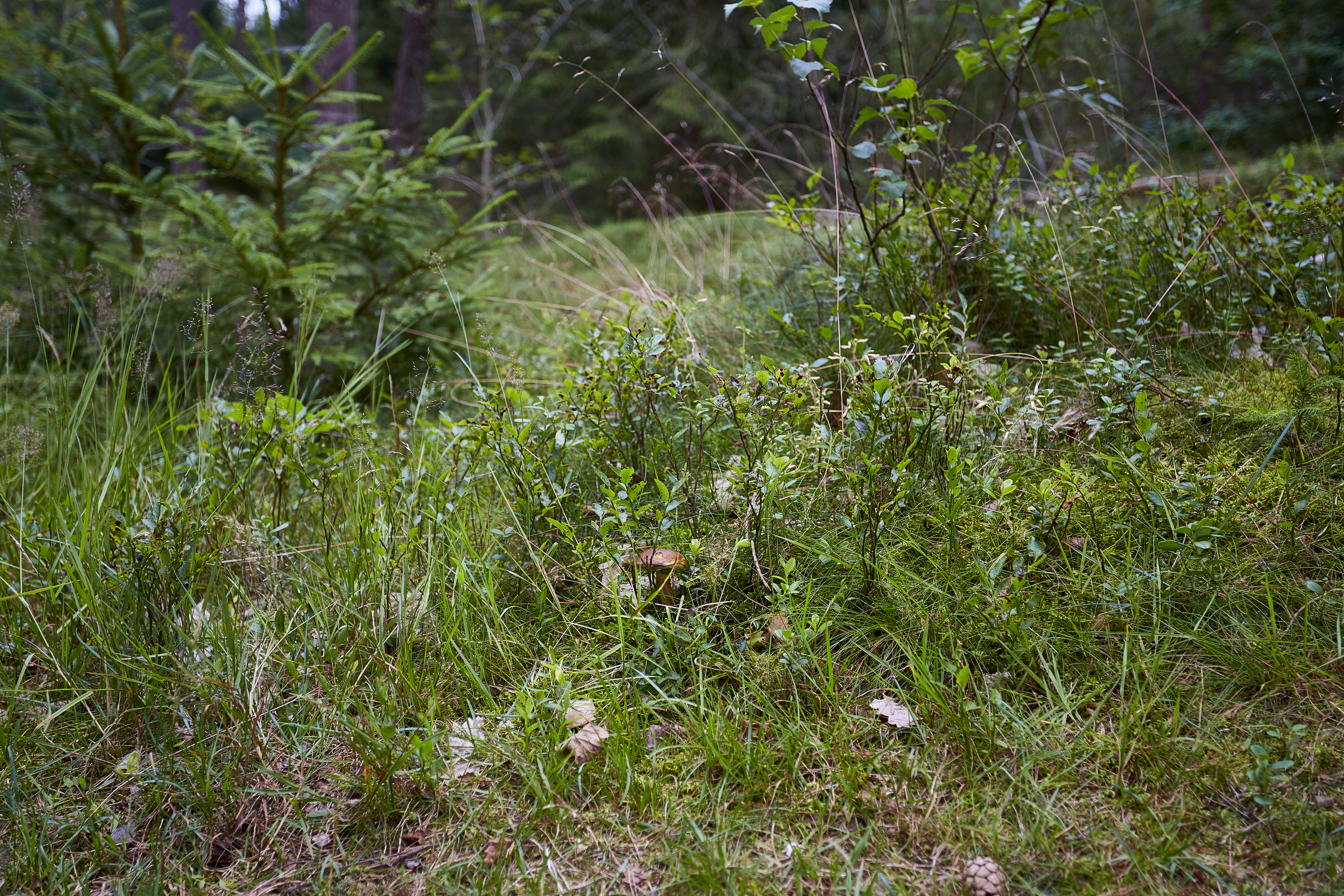
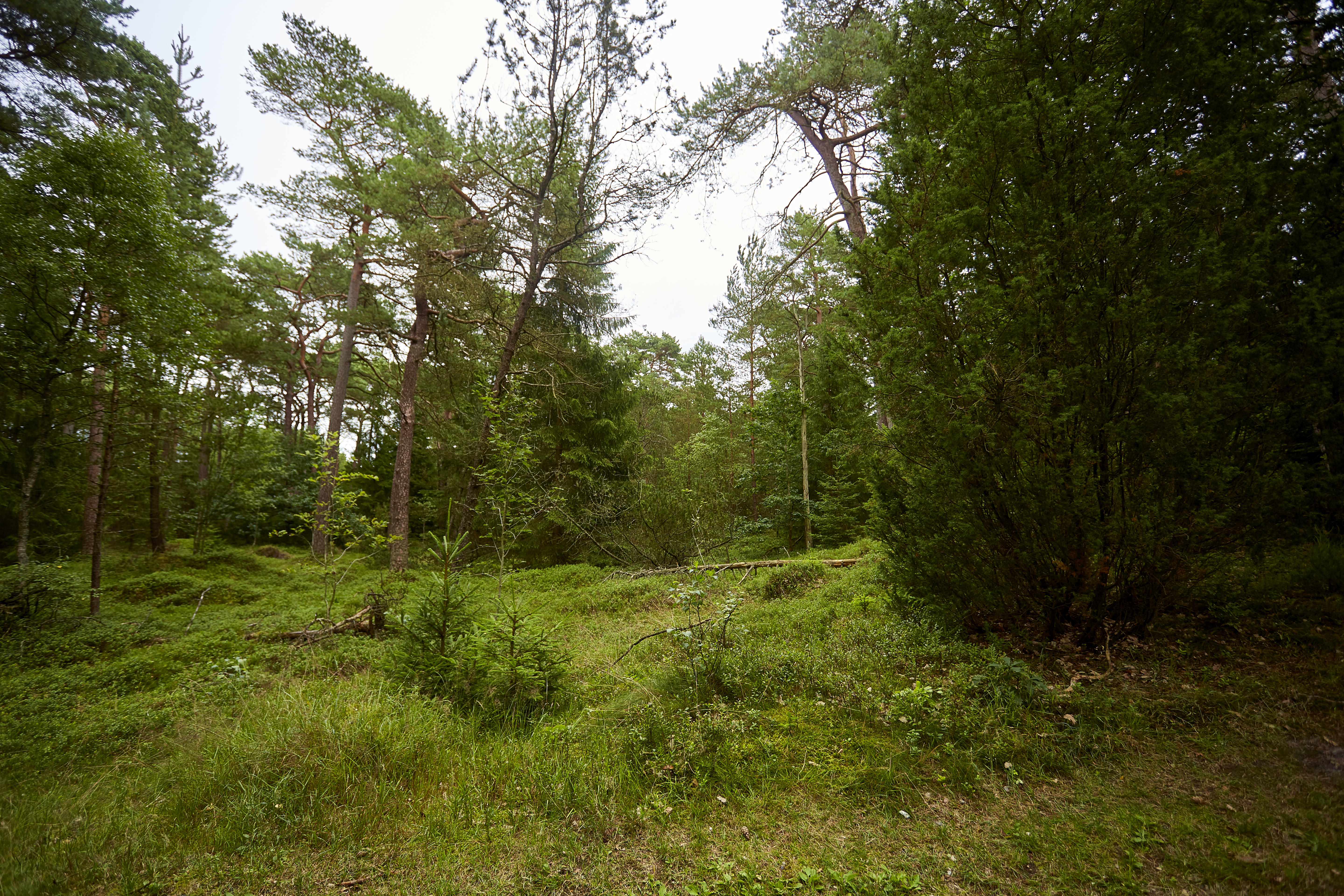
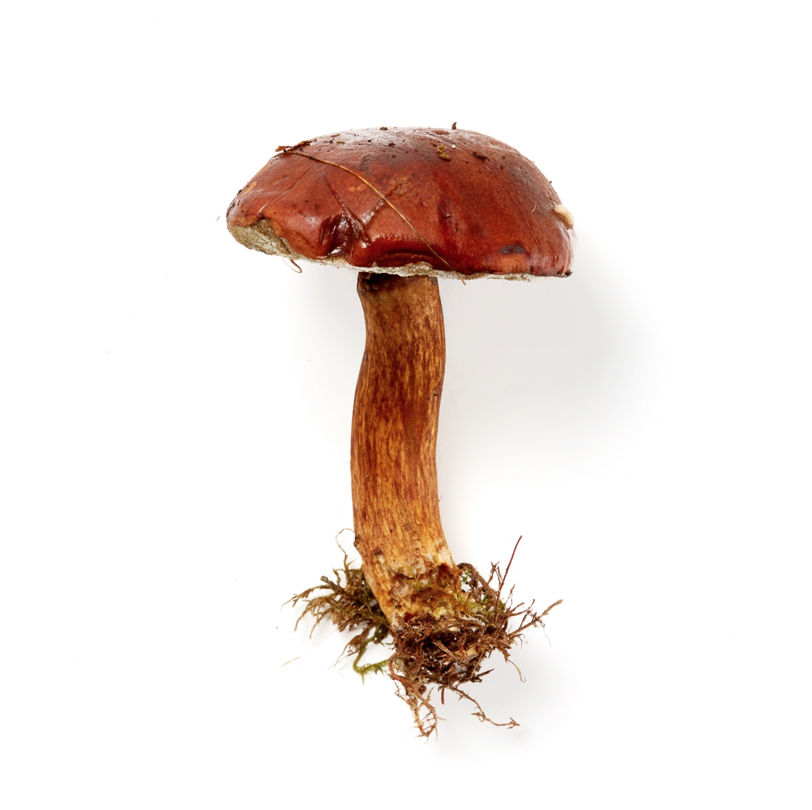
Bay bolete
Bay bolete is a beloved edible mushroom with a fine, chestnut-colored cap and light brown stem. It thrives in the darkness in acidic soil under heavy conifers. Think of it as “Karl Johan light.”
-
Where to Find It
Bay boletes are fairly common in coniferous forests and can sometimes be found in deciduous forests where the floor is more acidic. They live in dark areas: where there is heavy ground cover from conifer needles, near tree stumps, and at the edge of clearings in pine forests.
Coniferous forests.
-
When to Find It
Bay boletes pop up in September and October, but you may also be lucky enough to find them throughout the summer and into November. A warm, wet fall will bring a great number of bolete mushrooms.
Entire mushroom: July, August, September, October, November.
-
How to Spot It
Bay boletes are recognizable by their half-domed, chocolate brown caps and greenish pores. The stem has brown stripes, but is lighter than the solid-colored surface of the cap. As the mushroom ages, its cap becomes more irregular in shape until it finally flattens. It will also take on a slightly glistening appearance as the meat of the mushroom become less firm. Bay boletes can grow up to 15 cm tall with a cap diameter of around 12 cm. When you cut through the mushroom or push on the ends of its pores, you'll notice that the flesh turns bluish.
-
How to Pick It
Cut off the mushroom one centimeter above the ground and dust off the dirt with a small brush. You can also remove some of the dirt by slicing off the bottom of the stem with a knife. Snails and worms really like bay boletes, so check where you cut to see if the mushroom was attacked by vermin or if the flesh is even. Generally, worms attack only the stem and middle part of the cap.
Risk of misidentifying the plant
The smooth, brown colors and greenish-yellow pores that turn blue when pressed make it easy to recognize bay boletes. If you're in a hurry, however, you can mistake it for other (edible) boletes such as slippery jack, variegated bolete, and weeping bolete, which aren't exactly interesting in cooking.


